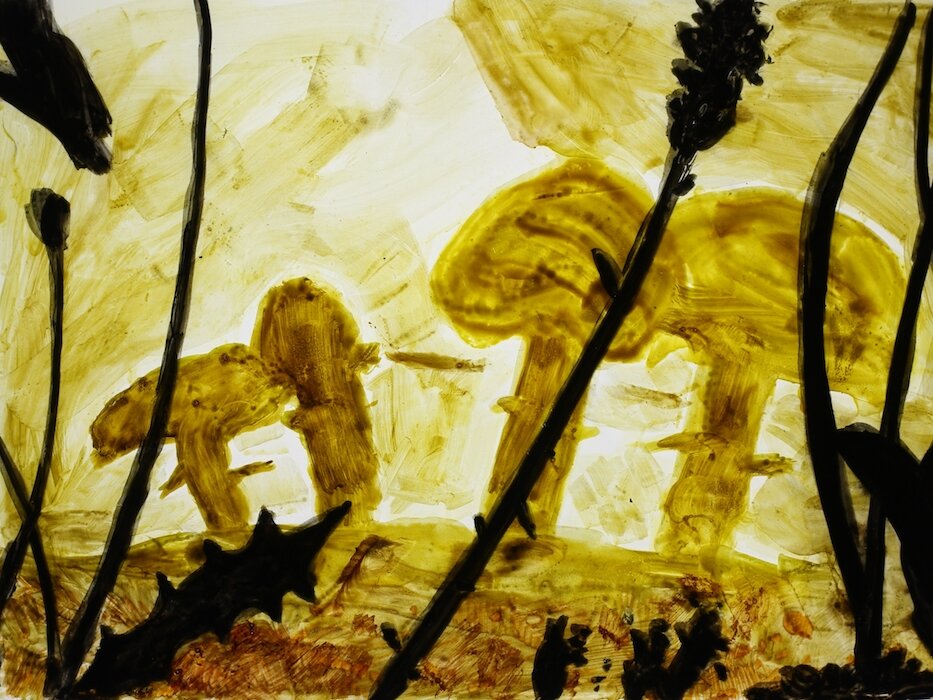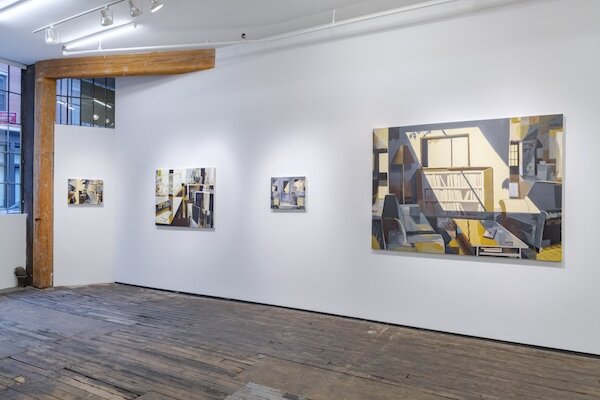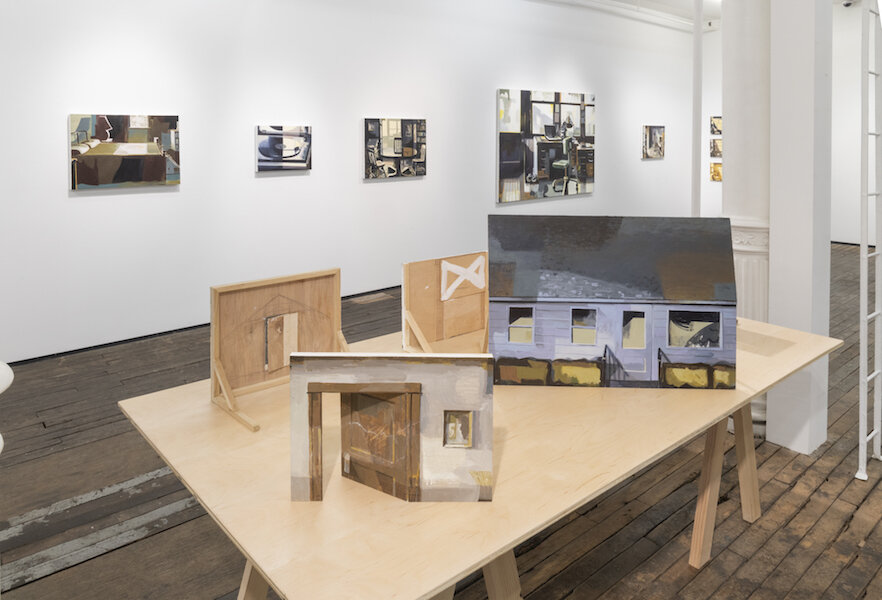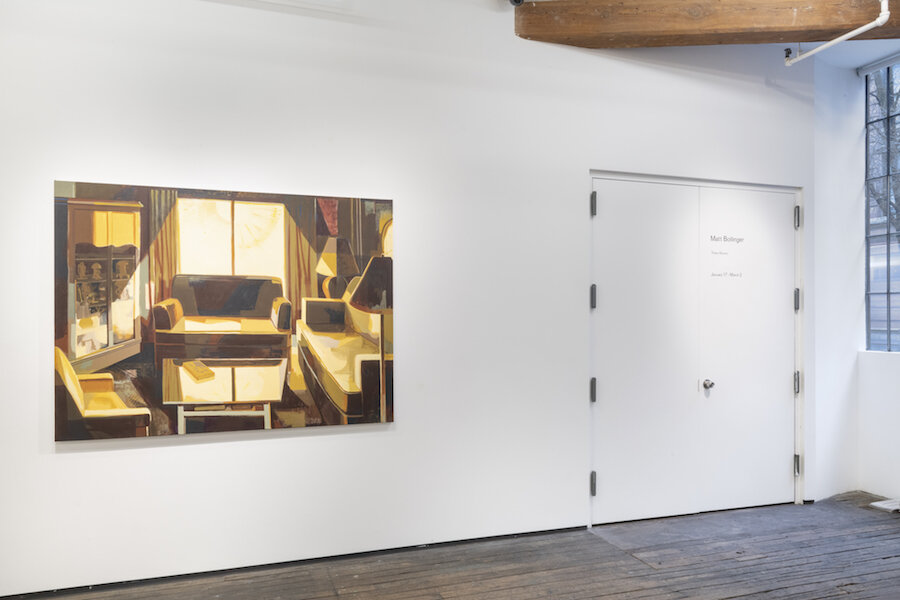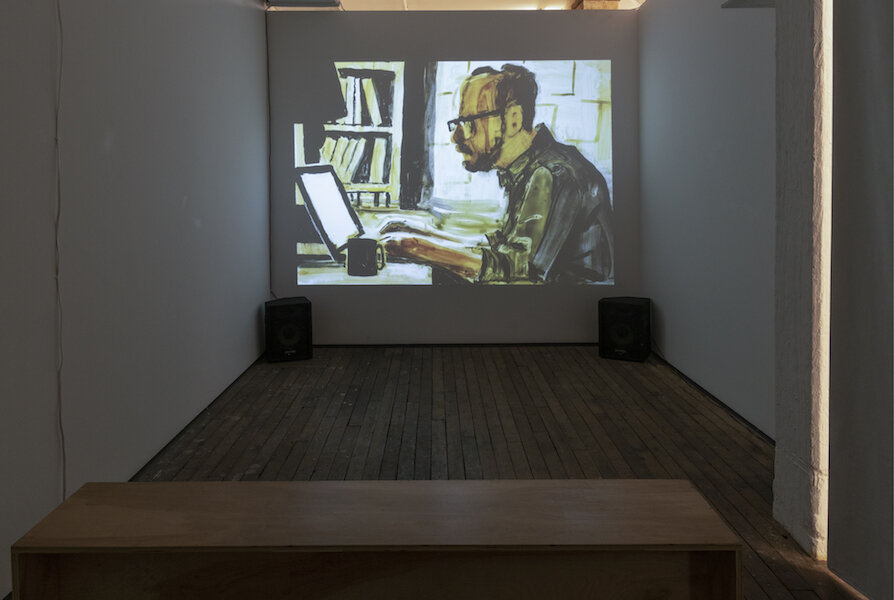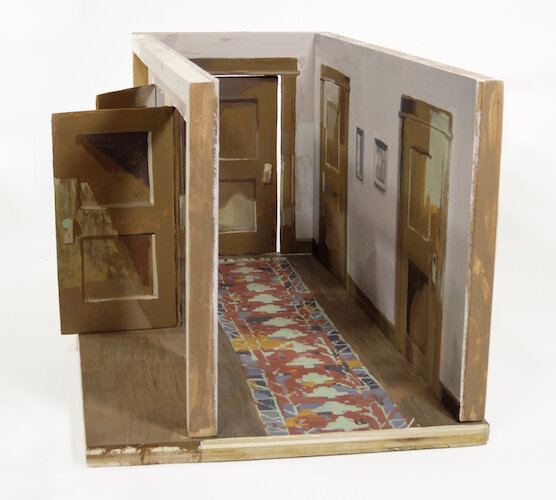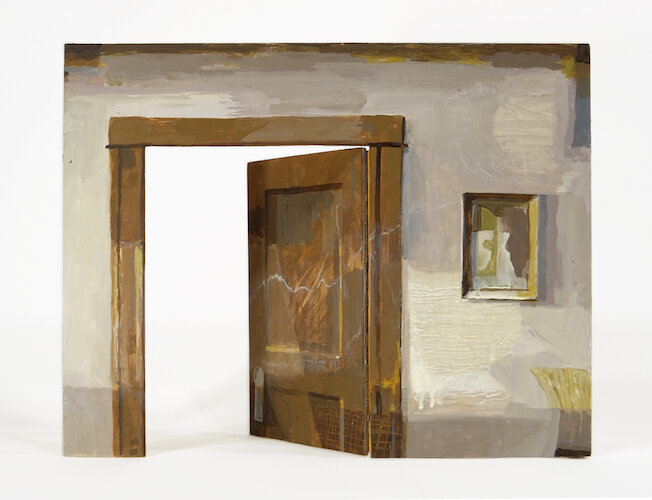NEW YORK
Matt Bollinger: Three Rooms
January 17 - March 2, 2019
PRESS:
Two Coats of Paint: “Matt Bollinger’s Fictional Universe” Interview with Sangram Majumdar
Zürcher Gallery, NY is very happy to present Matt Bollinger’s sixth solo exhibition, which includes a screening of the artist’s new animation, Three Rooms.
Accompanying this exhibition is a print publication covering Matt Bollinger’s three most recent exhibitions at Zürcher Gallery, New York: Independence, MO, Between the Days, and Three Rooms. This catalogue features an essay on Bollinger’s recent work by John Yau, “Where Does Time Go?”.
The following are excerpts from “Where Does Time Go?” by John Yau:
“Bollinger’s preoccupation with time became apparent in Independence, MO, and was further expanded upon in his next exhibition, Between the Days. In contrast to these two self-contained, largely autobiographical bodies of work, Three Rooms represents another breakthrough, as Bollinger moves into an invented domain that brings together a wide range of interests, including science fiction, physics, mycology, speculation, and hard fact. At the same time, the three bodies of work together can be understood as a trilogy documenting the history of a family – both real and fictional – across three generations.”
“Matt Bollinger paints the light of a remembered world – the pale green light of a computer’s screensaver; the subdued, dusty pink light of morning; the orange glow of the first cigarette of the day, lit while still in bed; the gray light cast by a television watched alone in the dark; a suspended, pale yellow parallelogram of light, which can be read as a signal of possible hope in the largely gray and black room. The light infuses the scene with a mysterious presence.”
”On the television screen, we see pale green tears falling. Emotions are what other people have. We do not know what the person watching them is feeling, but we certainly can guess. Bollinger combines dispassionate observation and extreme tenderness towards his subjects, an unlikely combination that gives his works an emotional depth few of his figurative contemporaries are able to attain.“”The ostensible subject is the perception of time. Working in the diverse mediums of painting, animation, and sculpture, he explores the many ways that time’s dominion manifests itself over us. While the paintings can be seen as frozen moments marked by subdued light and hushed color, the sculptures, as homely artifacts that have managed to survive time, offer a different avenue of exploration, as do the inventive dollhouse sets and props he makes for his films.“”In his animations, Bollinger scrutinizes the porous relationship between memory and imagination, and the many links and ruptures between past, present, and future. The static views of his paintings overlap with the unfolding of time in his animations, enabling him to return to such fundamental questions as: How do we live in time? What is time? And where does it go?“Three Rooms, Bollinger’s 18m, 30s animation is meticulously painted frame by frame in acrylic and flashe. The paintings in the show come directly from Bollinger’s process of creating the animation, in which he modifies and photographs the paintings hundreds of times. The paintings store within themselves the cycle of the passing days, hidden under layers of paint, or allowed to remain in carefully chosen fragments. After each sequence in the animation was completed, Bollinger continued to work on the paintings, deciding which fragments he would allow to remain. The sculptures embody gestures that come from the animations— a spectral figure pushes a door open and walks through it.”We see the rooms in the paintings, not the writer, mycologist, and the young woman. The people exist in the films – as shadows, emulsion-like surfaces, bubbles, and paint strokes. They move slowly. They dissolve. All of it becomes infused with feeling. And yet, when it comes to the paintings in the exhibition, the figures are absent. It seems that absence is also one of the ongoing subjects of Bollinger’s work, the realization that time’s passing changes everything in ways we might not understand."
